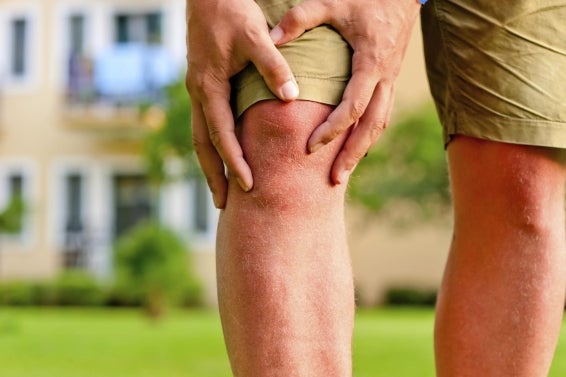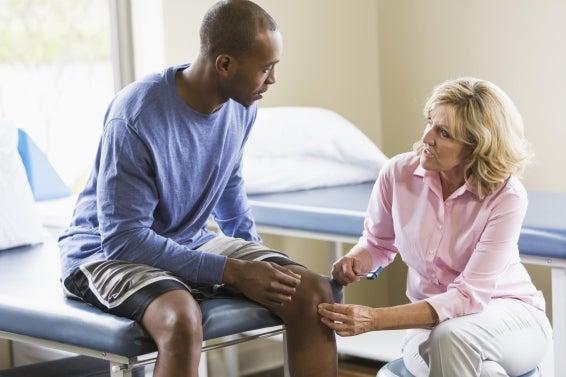View Providers

What to Do About Common Elbow Problems
Many things can trigger elbow pain, from an injury to a health condition. Elbow pain isn't usually a sign of a serious illness. Still, it can be annoying and uncomfortable. It can make daily activities difficult to do. Using the elbow too much, called overuse, is one of the most common reasons for swelling and pain. Elbow pain also can stem from diseases that affect this key joint. Here's what you should know about where elbow pain comes from, and what to do about it.
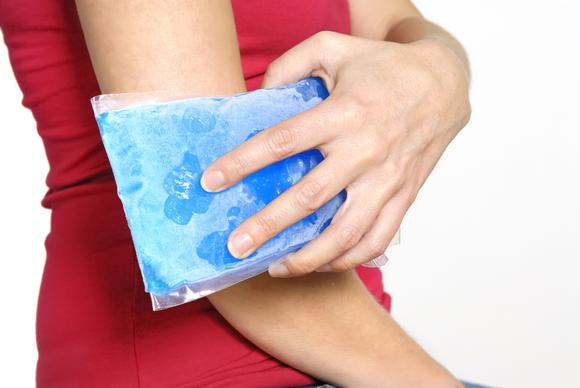
1. Tendinitis
The muscles that support the elbow joint can get weak and inflamed from too much use. That's tendinitis. Doing the same activities over and over again can cause this condition. Tennis elbow and golfer's elbow are nicknames for types of tendinitis. Raking leaves, throwing a ball, and lifting weights can all lead to this injury. So can jobs like painting, plumbing and carpentry. See your doctor if rest, anti-inflammatory medications, and ice don't ease your pain.

2. Rheumatoid Arthritis
Rheumatoid arthritis is an autoimmune disease that can strike different parts of the body, including the joints. The immune system mistakenly attacks the membrane inside the elbows and other joints. This creates inflammation and pain. When this arthritis flares, you may have swelling and trouble moving affected joints, along with other symptoms like fatigue. If your doctor diagnoses you with rheumatoid arthritis, there are medications to help control the pain and other symptoms.

3. Osteoarthritis
Osteoarthritis results when cartilage that covers parts of the bone within a joint wears away over time. It's not as common in the elbow because that joint carries less weight than the knees or hips. But, it can affect it. When that happens, it's usually from overuse. An injury can also lead to osteoarthritis of the elbow. See your doctor if rest, anti-inflammatory medications and ice don't relieve your pain or if your pain gets worse over time. Work with your doctor on a more effective treatment plan.
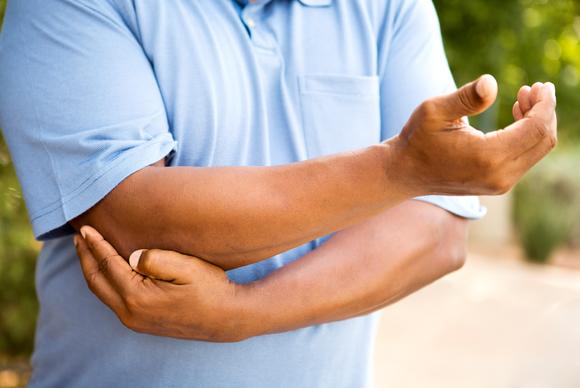
4. Gout and Pseudogout
Gout is another type of arthritis. It occurs when uric acid crystals form and settle in the joints. The joint swells and becomes painful. Gout usually starts in the big toe, but it can affect other joints, including the elbow. Gout tends to come and go over time. Pseudogout is similar to gout, but the crystals have a different composition. It can strike elbows and other joints and cause pain and swelling at night. Medication may help, as can dietary changes like limiting or omitting sugary drinks.
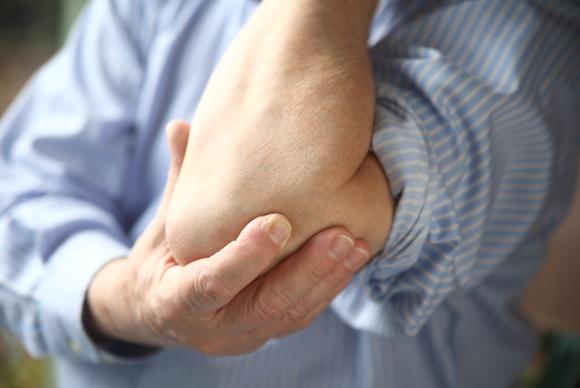
5. Bursitis
Small, fluid-filled sacs called bursa help your joints move smoothly. When one or more of these sacs is inflamed, you can develop bursitis. Rheumatoid arthritis, gout and other medical conditions may cause bursitis. So can hitting your elbow very hard or pressing it repeatedly against something hard, like a countertop or a table. Pain and swelling in the elbow may make it difficult to move the joint. See your doctor if rest and anti-inflammatory medicine don't help.

6. Lupus
Lupus is another autoimmune disease that attacks different parts of the body. It most often affects the hands and feet, causing swelling and stiffness. If it involves the elbow joint, you're likely to experience elbow pain. Lupus is a serious health condition that needs treatment beyond managing elbow pain. See your doctor if you have any of the warning signs: fever, fatigue and a rash across the center of your face.

7. Elbow Injuries
An injury, such as a fracture or dislocation can cause elbow pain. The elbow joint can be dislocated if the ball part of the joint slips out of its socket. This can result from an accident like landing on an open hand from a serious fall. An injury can also cause any of the three main bones in the elbow joint to fracture. See your doctor or go to a walk-in health clinic or urgent care center if you have extreme pain in your elbow, the joint seems twisted, or you can't move your elbow joint.



